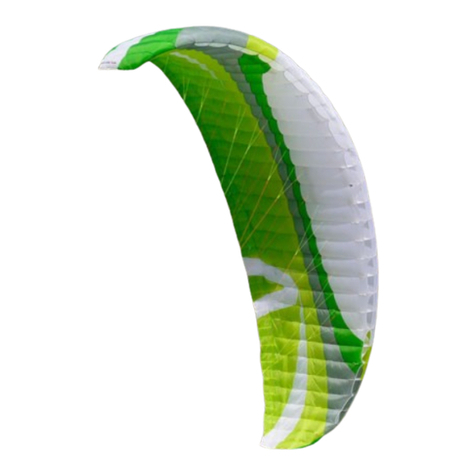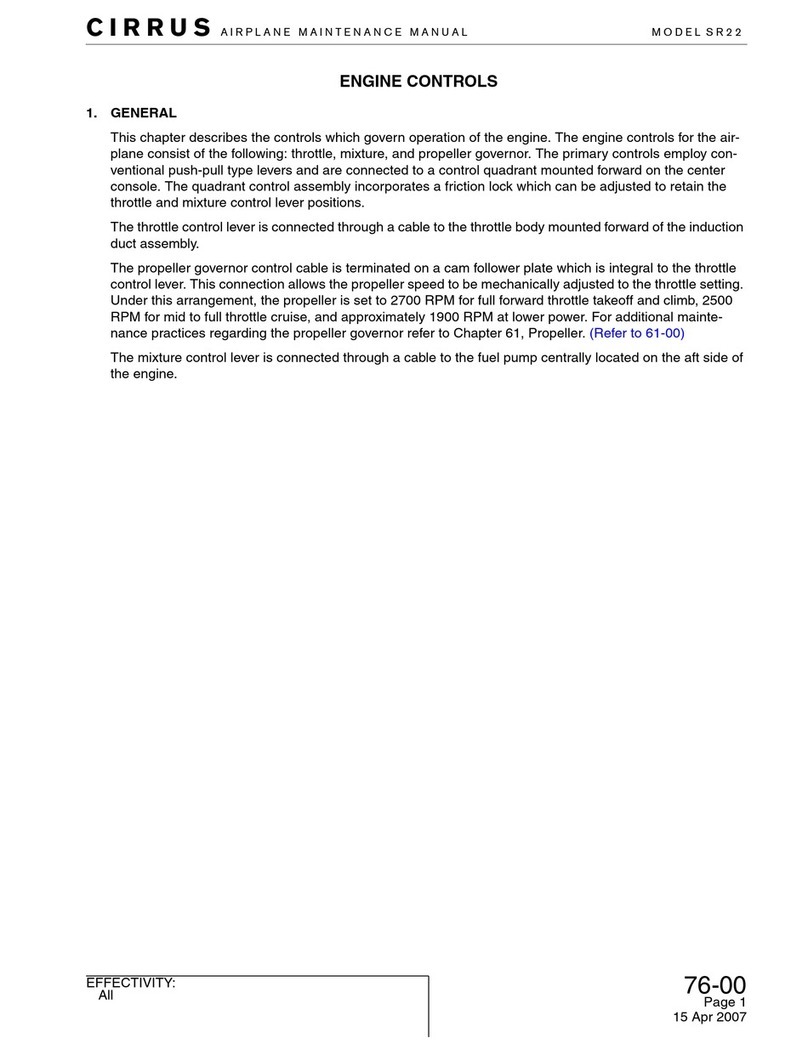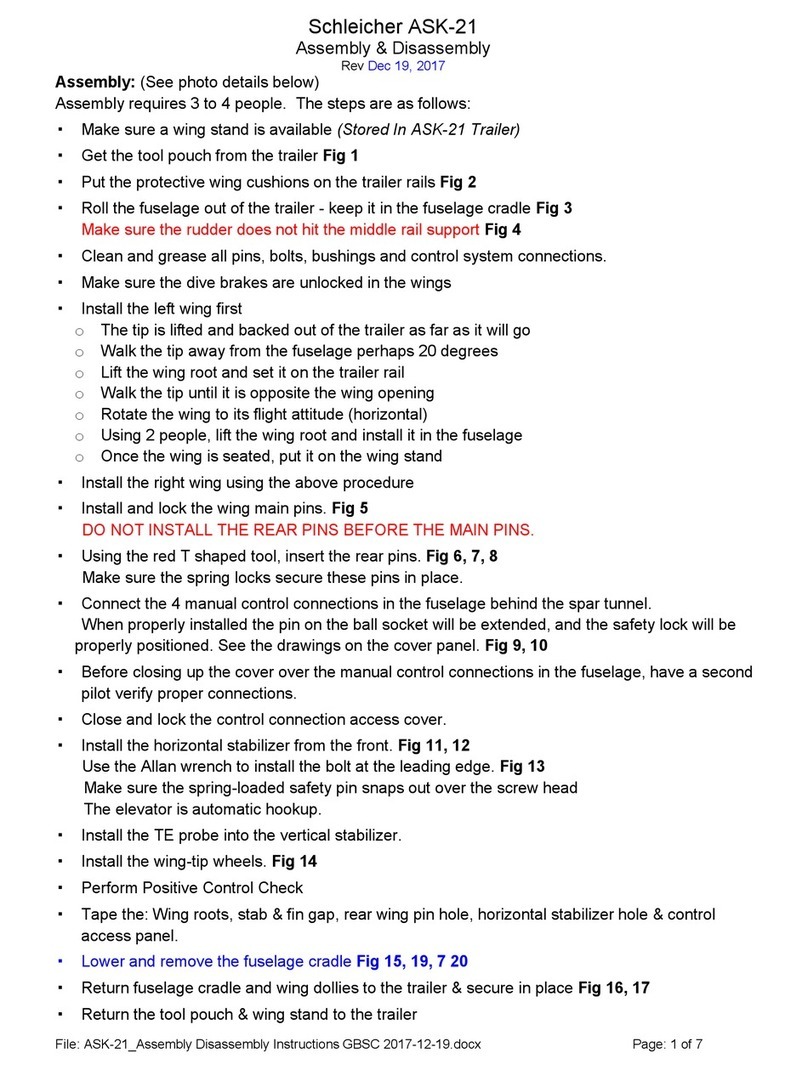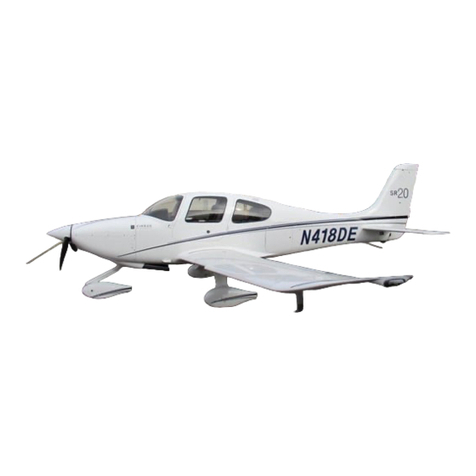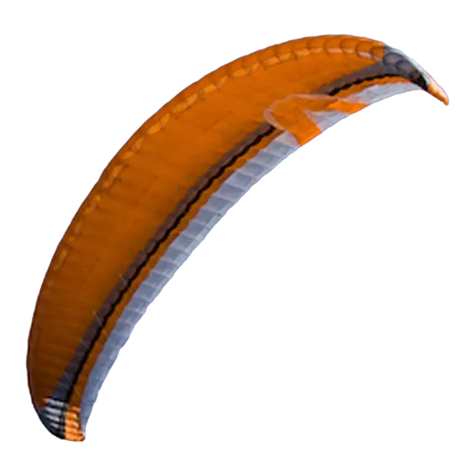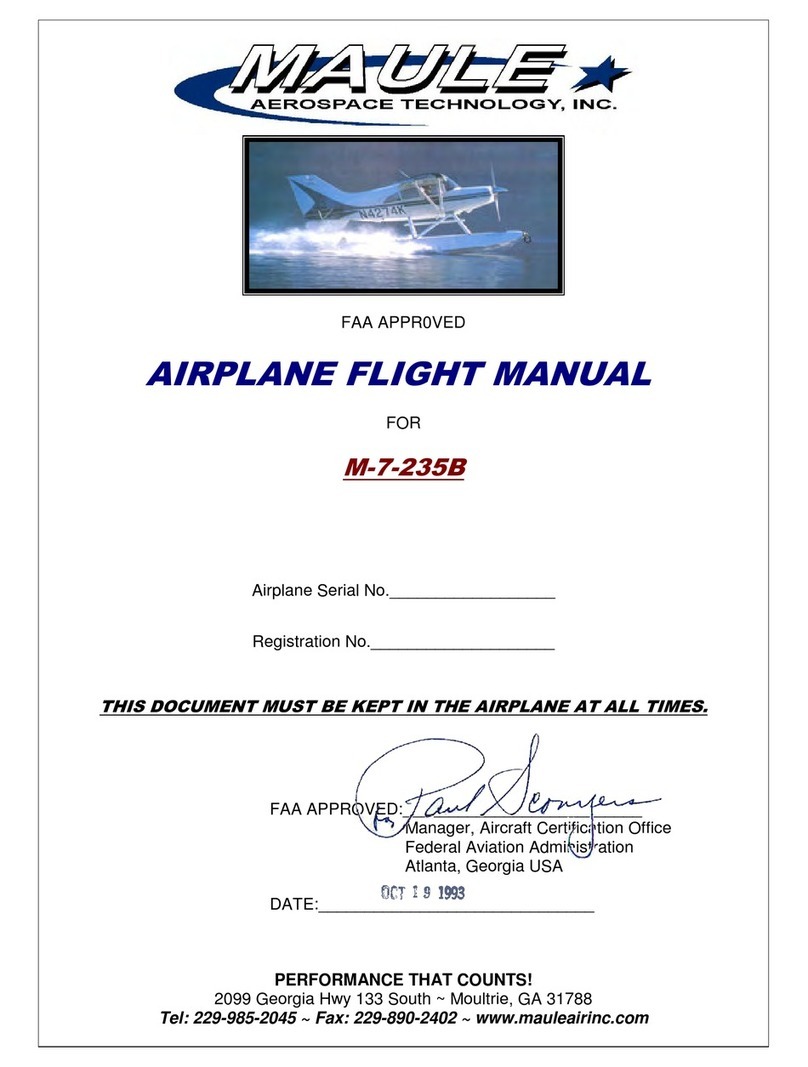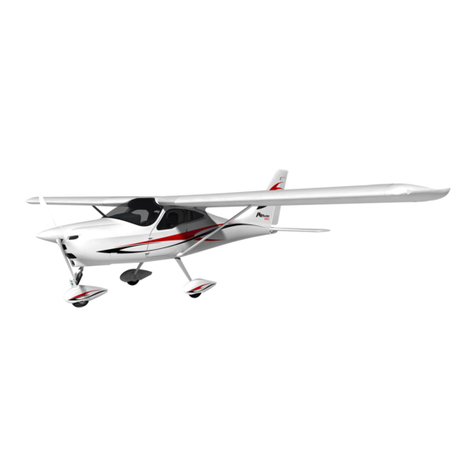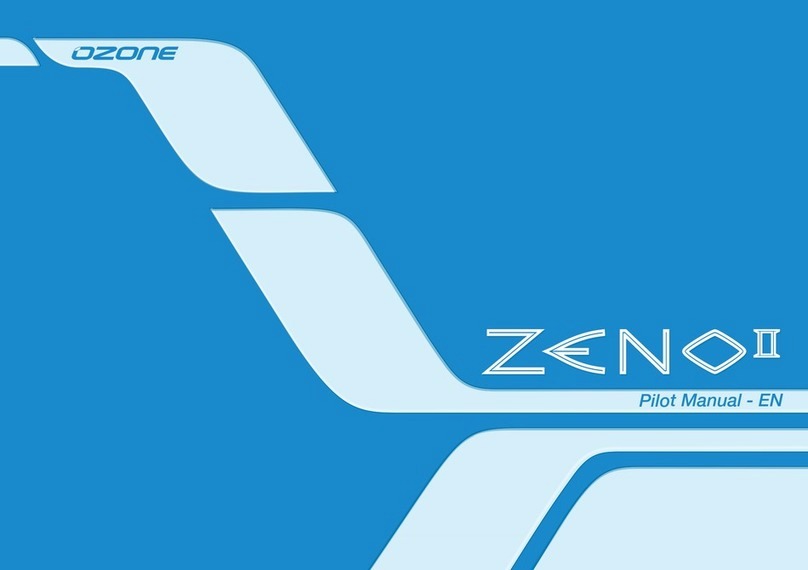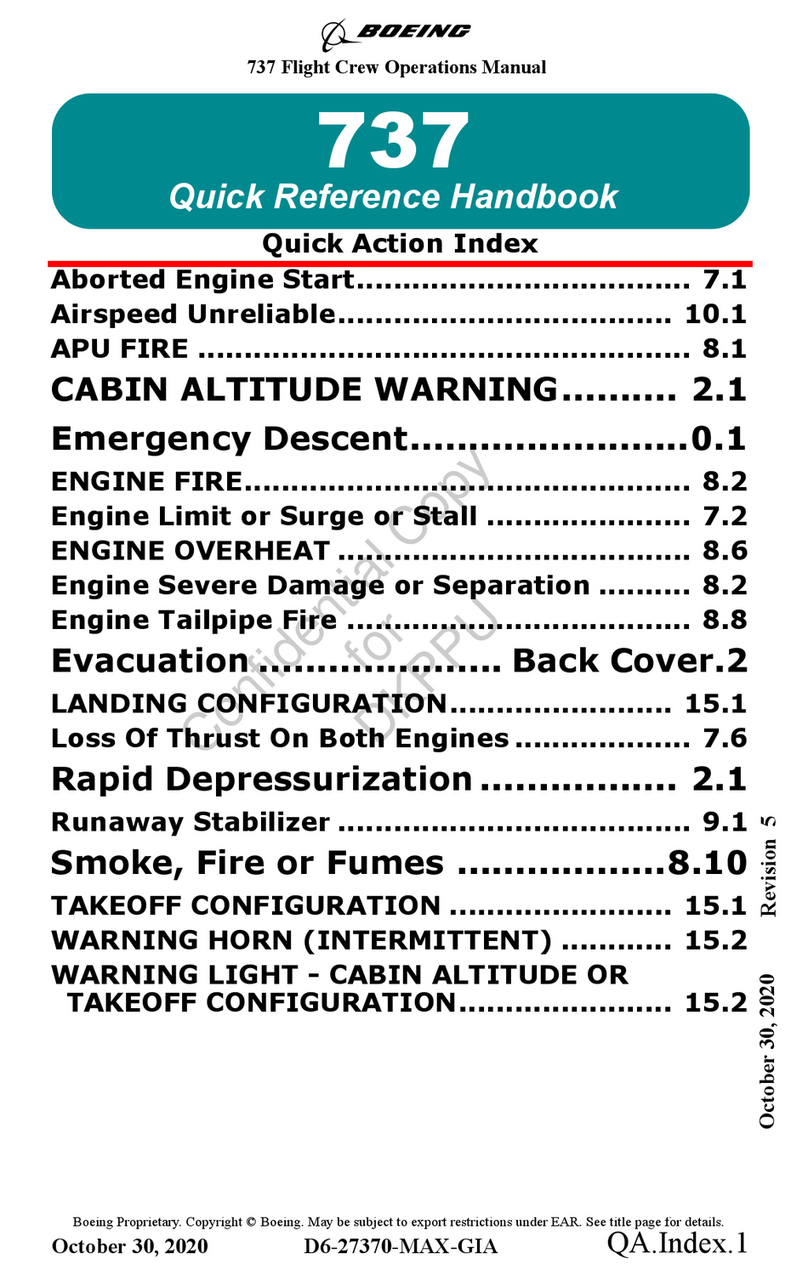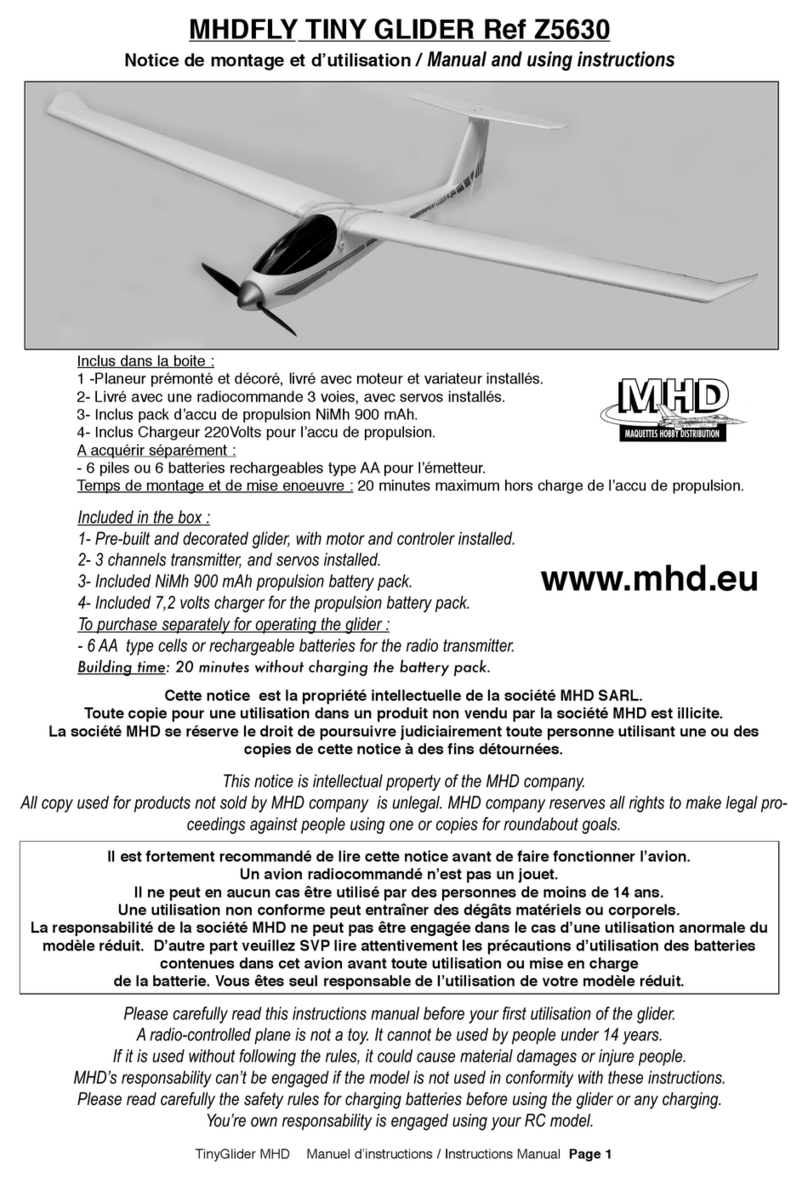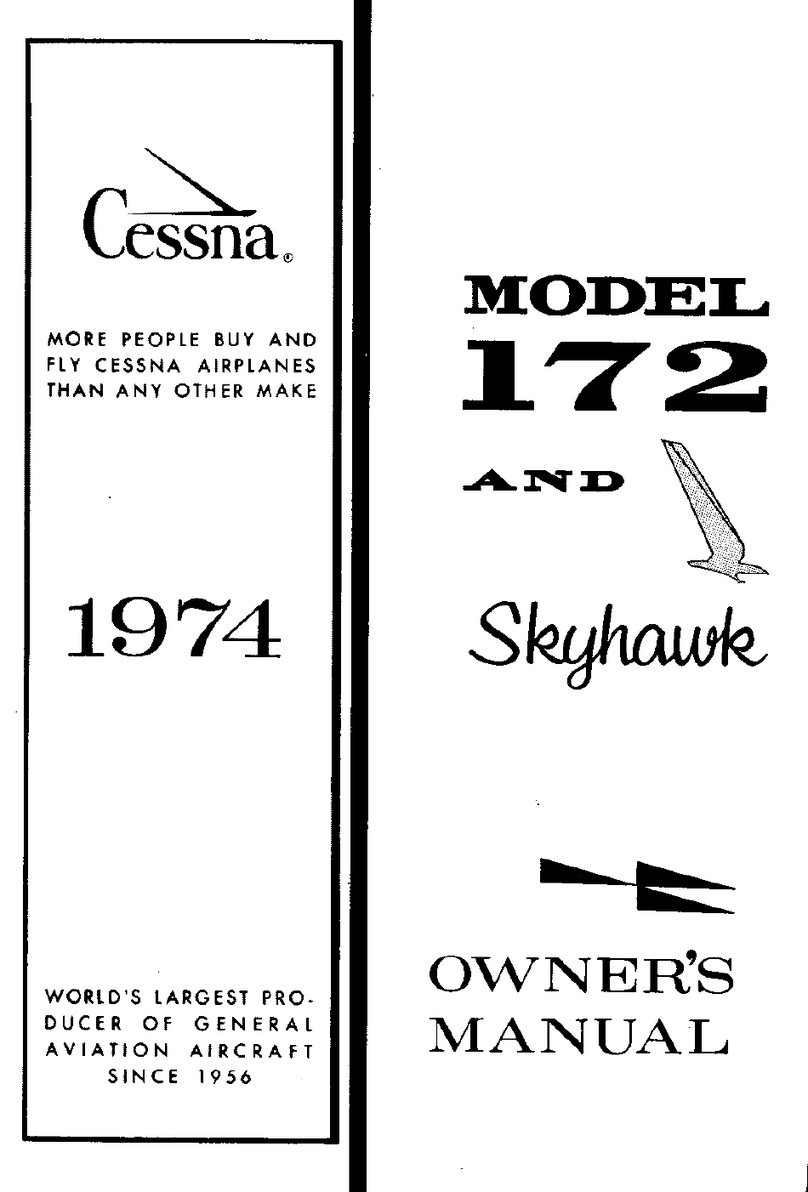NIVIUK GLIDERS KOYOT 5 User manual

KOYOT 5
USER MANUAL

WELCOME
KOYOT 5
FEEL THE PILOT IN YOU
We welcome you to our team and thank you for
Niviuk paraglider.
We would like you to share the enthusiasm
with which we have created this paraglider and
the importance and care with which we have
developed the design and manufacture of this new
paraglider.
The KOYOT 5 is an initiation, progression and
recreational glider that will allow you to join the
exciting world of paragliding.
and will soon discover the meaning of our motto:
“The importance of small details to make
great things happen”.
This is the user manual and we recommend you
read it carefully.
Niviuk Gliders & Air Games SL
C/ Del Ter 6 - nave D
+34 972 422 878
www.niviuk.com
Progression
2

USER MANUAL CONTENTS
This manual provides you with the necessary
information on the main characteristics of your new
paraglider.
Whilst it provides information on the wing, it cannot
be viewed as an instructional handbook and does
own system of licensing.
Only the aeronautical authorities of respective
countries can determine pilot competence.
The information in this manual is provided in order
to warn you against adverse flying situations and
potential dangers.
important to carefully read all the contents of your
new KOYOT 5 manual.
injuries or death. The manufacturers and dealers
cannot be held responsible for misuse of the
paraglider. It is the responsibility of the pilot to
1. CHARACTERISTICS
1.1 WHO IS IT DESIGNED FOR?
1.2 CERTIFICATION
1.3 IN-FLIGHT BEHAVIOR
1.4 CONSTRUCTION, MATERIALS,
TECHNOLOGIES
1.5 ELEMENTS, COMPONENTS
2. UNPACKING AND ASSEMBLY
2.1 CHOOSING THE RIGHT LOCATION
2.2 PROCEDURE
2.3 CONNECTING THE HARNESS
2.4 HARNESS TYPE
2.5 SPEED-BAR
2.6 INSPECTION AND WING INFLATION
ON THE GROUND
2.7 ADJUSTING THE BRAKES
3. THE FIRST FLIGHT
3.1 CHOOSING THE RIGHT LOCATION
3.2 PREPARATION
3.3 FLIGHT PLAN
3.4 PRE-FLIGHT CHECK
3.5 WING INFLATION, CONTROL AND
TAKEOFF
3.6 LANDING
3.7 PACKING
4. IN FLIGHT
4.1 FLYING IN TURBULENCE
4.2 POSSIBLE CONFIGURATIONS
4.3 ACCELERATED FLIGHT
4.4 FLYING WITHOUT BRAKE LINES
4.5 LINE KNOT(S) IN FLIGHT
5. LOSING ALTITUDE
5.1 BIG EARS
5.2 B-LINE STALL
5.3 SPIRAL DIVE
5.4 SLOW DESCENT TECHNIQUE
6. SPECIAL METHODS
6.1 TOWING
6.2 ACROBATIC FLIGHT
7. CARE AND MAINTENANCE
7.1 MAINTENANCE
7.2 STORAGE
4
4
4
4
4
5
6
6
6
6
6
6
7
7
7
7
7
7
7
7
8
8
8
8
8
9
10
10
10
10
10
11
11
11
11
11
11
11
12
12
12
13
13
14
14
15
16
17
18
18
18
19
19
20
7.3 CHECKS AND INSPECTIONS
7.4 REPAIRS
8. SAFETY AND RESPONSIBILITY
9. GARANTEE
10. ANNEXES
10.1 TECHNICAL DATA
10.2 MATERIALS DESCRIPTION
10.3 RISER PLAN
10.4 LINE PLAN
10.5 LINE LENGTHS KOYOT 5 22
10.6 LINE LENGTHS KOYOT 5 24
10.7 LINE LENGTHS KOYOT 5 26
10.8 LINE LENGTHS KOYOT 5 28
10.9 LINE LENGTHS KOYOT 5 31
10.10 CERTIFICATION
3

CHARACTERISTICS
1.1 WHO IS IT DESIGNED FOR?
Enter the exciting world of paragliding. If you know that the passion for flying is in your nature and you want to
to experience incredible new adventures in the sky. Learn to fly safely, easily and comprehensively.
glider.
1.2 CERTIFICATION
The load test proved that the wing can withstand the stipulated 8G.
The shock test proved that the wing can resist 1000 daN of force.
EN A
LTF A
Only the aeronautical authorities of respective countries can determine pilot competence.
We recommend pilots read the flight test report carefully, especially the comments of the test pilot. The
report contains all the necessary information on how the paraglider reacts during each of the tested
manoeuvres.
Description of flight characteristics of LTF/EN A paragliders:
paragliders with maximum passive safety and extremely forgiving flight characteristics. Gliders with
good collapse resistance in normal flight.
designed for all pilots, including pilots under instruction.
pages of this manual or see or visit the Downloads section at www.niviuk.com.
1.3 IN-FLIGHT BEHAVIOUR
make flying easier for the pilot.
To increase performance while maintaining the highest level of safety. To ensure that the wing transmits the
maximum feedback in an understandable and comfortable way so that the pilot can focus on piloting and
enjoying the flight. And, with active piloting, take advantage of all favourable conditions.
In all aspects of flight, the wing is very solid and stable. The glide is smooth, even when fully accelerated.
During glides, the wing maintains altitude and the wing remains stable. Improved turn precision means
handling is less physical and provides better feedback. Inflating the wing is much easier and gentler, without
overshooting.
Flying this wing is very intuitive, with clear and useful feedback about the airmass. It responds to the pilot’s
range of speed for incredible glides.
1.4 CONSTRUCTION, MATERIALS, TECHNOLOGIES
the current technology and accessories available to improve pilot comfort whilst increasing safety and
performance.
4

In the design of all Niviuk products the team aims to ensure development and continuous improvement.
The technologies developed in recent years have allowed us to develop greater, better wings. It is in this
context that we would like to introduce the technologies included in this new model:
RAM Air Intake - this system is characterised by the arrangement of the air inlets, to ensure optimal
maintaining the same air flow at all angles to improve laminar flow. More consistency across the whole
speed range and better performance without compromising on safety.
Titanium Technology (TNT)
provides the highest level of protection against deformation, heat or breaks. The leading edge is more
rigid and the wing surface remains perfectly taut, without creases or parasitic drag. This optimises glide
in all phases of the flight. Because the flexible rods always return to their original shape, the integrity of
breaks.
Structured Leading Edge (SLE) - the use of the SLE considerably reduces the amount of Mylar which
was used in previous Niviuk wings and this also reduces the weight of the leading edge. Therefore, it is
3D Pattern Cut Optimisation (3DP)
and cutting system. Creating separate panels for each of the sections at the front of the wing means the
sail fabric is more taut and crease-free. During the cutting, the optimal orientation of the fabric section is
3D Leading Edge (3DL)
joins and shapes the leading edge panels. The fabric is guided by the panel position to ensure fewer
performance and durability.
in flight comfort.
manufacturing processes as in the rest of our range. From Olivier Nef’s computer to fabric cutting, the
This program also paints the guideline markers and numbers on each individual fabric piece, thus
avoiding errors during this delicate process.
automation of this process.
The fabric used to manufacture the glider is light, resistant and durable. The fabric will not fade and is
covered by our warranty.
The main, upper and lower gallery lines are made from sheathed Aramid.
performance with the least drag. The sheath protects the line cores from UV-rays and abrasions.
The lines are semi-automatically cut to length and all the sewing is completed under the supervision of our
specialists.
manufacturer.
manual.
1.5 ELEMENTS, COMPONENTS
of your paraglider:
An inner bag to protect the wing during storage and transport.
An adjustable compression strap to compress the inner bag and reduce its volume.
A riser protector, which will prevent metal parts from coming into contact with the
cloth during storage.
A repair kit with self-adhesive Ripstop tape and spare O-rings to protect the maillons.
los maillones.
A Kargo bag. This bag is not included in the pack, but we recommend getting it. This bag is large
5
Table of contents
Other NIVIUK GLIDERS Aircraft manuals

NIVIUK GLIDERS
NIVIUK GLIDERS SKIN 2 User manual

NIVIUK GLIDERS
NIVIUK GLIDERS KOYOT 5 P User manual

NIVIUK GLIDERS
NIVIUK GLIDERS SKIN 3 User manual
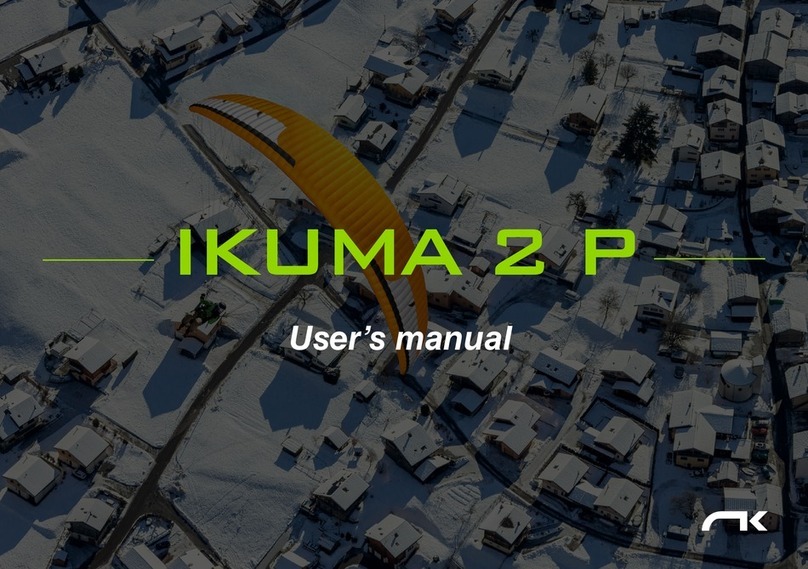
NIVIUK GLIDERS
NIVIUK GLIDERS IKUMA 2 P User manual

NIVIUK GLIDERS
NIVIUK GLIDERS PEAK 5 User manual
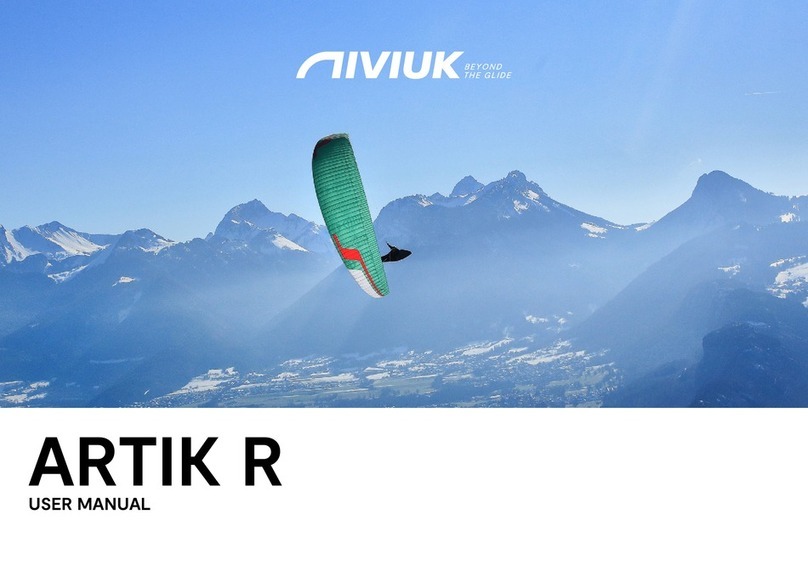
NIVIUK GLIDERS
NIVIUK GLIDERS ARTIK R User manual

NIVIUK GLIDERS
NIVIUK GLIDERS IKUMA Series User manual
